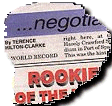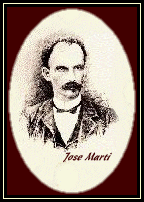

Cuba became a Spanish colony soon after the arrival of Christopher Columbus in 1492, and remained so for the next 410 years. During this period the island progressed from a transhipment point for wealth from Central America to one of the major producers of sugar on the world market by the 1820's.
By this time, as well, there were changes in Cuba's ethnic composition due to the replacement of Amerindian slaves with those from Africa. In 1774 a census revealed a population of 96.000 whites, 44.000 slaves and 31.000 free blacks. Slavery was officially abolished in 1886.
Revolutionary sentiments were in evidence from around 1850 when several attacks on Spanish garrisons were financed and led by Spanish planters. In 1868 the Ten Years' War of independence was launched and led by Carlos Manuel de Cespedes. This conflagration was as a result of many factors that were essentially political and economic. These included the interference in Cuban government affairs by the Spanish crown in Madrid, resultant tension between Creoles (criolos - locally born) and peninsulares (Spanish born) officials, the latter wielding social, bureaucratic and political power, economic divisions between the eastern section of the country that did not possess the same economic resources as the west and a decline in sugar production from 620.000 tons
(1865) to 597.000 tons (1867).
It was, indeed, in the eastern provinces to which the decade-long war was confined. During the conflict, the insurgents pleaded towards the United States for assistance. However, the U.S. had, by this time, their own plans for acquiring control of Cuba, and many politicians did not feel the time was ripe for getting rid of Spanish rule. Instead, the war continued until 1878, when the Treaty of San Juan was signed with the provisions that the Spanish Government would concede the right of participation in Cuban elections; that Cubans would enjoy the right of representation in the Spanish Parliament and that the freedom of all slaves and indentured workers who participated in the Ten-Year struggle for independence would be recognized.
But things did not remain settled for long. Political conflict ensued between members of the Cuban Liberal Party
(known as the Autonomistas) , formed by members of the Creole majority, and the Constitutionalists who were basically peninsulares and members of the bureaucracy and who were "intransigent" in their opposition to Cuban nationalism. This conflict was exacerbated by the further diminution in Cuban economic fortunes. The decade-long war had resulted in the destruction of the sugar industry on the eastern side of the island and total sugar output in 1878 was only 1/3 of its original figure. Furthermore, the next 17 years saw the appearance of men such as Antonio Macedo and Maximo Gomez - men, who became convinced that the battle for independence would have to be resumed on the battlefield. Another member of this rank was José Martí. Imprisoned as a youth for writing a contemptuous letter to a local volunteer in the Spanish army, Martí was to join a list of Cuban revolutionaries such as Gabriel Placido, Narcisco Lopez, Cespedes and Perucho Figueredo.
A speaker at Masonic meetings, a writer of newspaper articles, Martí was a poet and an orator and was respected wherever he travelled. It was while in New York City in 1895, that Martí was able to raise funds to finance the new revolution. War duly broke out while Martí was on his way back to Cuba with his own expeditionary force. As Arciniegar ( 1946) poetically puts it : " From the deck of the fruit ship returning him to his country, he saw, in the afternoon sun, the mountains of Cuba. The sea was the Caribbean, and the coast lay three miles away. A little boat carrying six men was put over the side ....At last Free Cuba was about to be born, before his eyes. Fording rivers, crossing swamps and mountains, Martí pushed on to join soldiers of freedom." One can even go as far as to equate this scene with the returning Fidel Castro 61 years later.
During the war U.S. interest in Cuba was fuelled by the imperialistic desire of finding new markets to aid its growing economy. There was also the realization that the U.S. was rapidly becoming a global power, and the need was expressed in some quarters to build up its naval strength. Perhaps Martí was aware of these sentiments when he expressed the fear that the U.S. involvement in the war would ultimately lead to a denial of Cuban independence. As it was, Martí was killed in combat on April 19. 1895. Three years later, American Senator Mark Hanna of Ohio, issued a prophetic statement: " We will control Cuba. It makes little difference now whether or not the insurgents can maintain a stable government. In less than 20 years the U.S. will practically own the island."
Earlier that year, on the night of February 15, 1898, the American battleship the U.S.S. Maine, exploded in Havana harbour, killing 264 sailors and two officers. While Spanish involvement was never really proven ( and there have been, even to this day, contentions that the explosion was accidental ), the disaster was used to ignite the Spanish-American War ( or, more directly, the Cuban-Spanish-American War ), a conflict that would lead to the termination of Spain's days as a colonial power. Soon the "United States intervened, and Spain lost Cuba, Puerto Rico and the Philippines. Cuba was to go on fighting for her liberation". (Arciniegar).Remarkably, no Cuban was present at the signing of the Treaty of Paris on December 10, 1998. The U.S. controlled the island, administratively, for three years before independence was finally proclaimed on May 20, 1902. But the following year, an amendment to the Army Appropriation Act of 1901, sponsored by Senator Orville Platt of Connecticut, was tacked on to the new Cuban constitution; it was to be a provision that would effectively define the U.S. - Cuban relationship during the first fifty-nine years of the twentieth century. In its essential features, the Platt Amendment "pledged the republic to maintain a low public debt; to refrain from signing any treaty impairing its obligation to the United States; to grant the United States the right of government; and, if requested, to provide long-term naval leases." (Langley, 1982). The latter would eventually lead to the installation of the U.S. Naval Base at Guatámano Bay. It is only when the Cuban Government accepted this measure that the U.S. began a significant pullout of troops.The economic domination that the U.S. was to exercise over the island over the next six decades was remarkable. Perez points out: " Foreign capital dominated the Cuban economy". Investments were mainly in the areas of sugar, railways, port works and communications. While British investments accounted for $ 60 million, the French portion for $ 12 million and the German share for $ 4.5 million, by 1911 the total United States capital stake on the island was a staggering $ 200 million - of which $ 50.000.000 was in sugar alone.
-
Cuba History - part 2
|
Cuba Thesis Historical
Background of Cuba before Castro Historical
Background of Cuba before Castro
|
|
José
Martí |
|
Non Sports Stories
|





